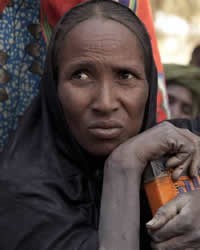Idaksahak in Mali

Photo Source:
jhntering - Wikimedia
Creative Commons
|
Send Joshua Project a map of this people group.
|
| People Name: | Idaksahak |
| Country: | Mali |
| 10/40 Window: | Yes |
| Population: | 183,000 |
| World Population: | 187,000 |
| Primary Language: | Tadaksahak |
| Primary Religion: | Islam |
| Christian Adherents: | 0.00 % |
| Evangelicals: | 0.00 % |
| Scripture: | Translation Needed |
| Ministry Resources: | No |
| Jesus Film: | No |
| Audio Recordings: | Yes |
| People Cluster: | Songhai |
| Affinity Bloc: | Sub-Saharan Peoples |
| Progress Level: |
|
Introduction / History
The Idaksahak ("Sons of Isaac") formerly were herders for Tuareg nobles, in return for their protection. This relationship has now broken down and there is less mixing of the two peoples, except they use the same watering holes and trade at the same markets. Some consider the Idaksahak a Tuareg clan.
Most Idaksahak people are in Mali, but a small number live further north in Algeria.
What Are Their Lives Like?
Some have become settled farmers. Many are nomads and have few possessions apart from their animals. The men are often bi-lingual, speaking their own language and the language of the Tuareg. The women and children are often isolated in their camps and speak only their own language. Schooling is available only in the towns and will likely be in French.
What Are Their Beliefs?
The Idaksahak people are entirely Muslim. They agree with Muslim theology regarding the supremacy of Allah above all other gods. Yet, they depend on other spiritual forces in their daily lives. As far as we know, there are few, if any Idaksahak believers in Christ.
What Are Their Needs?
Because of the lack of rain in their region, the Idaksahak people's livestock and crops are suffering. They need good schools and medical facilities.
Prayer Points
Pray for good schools for Idaksahak children. May parents will see the importance of sending their children to school.
Pray for adequate rain as a practical testimony of God's power and love.
Pray for the gospel to have a lasting impact on the Idaksahak people.
Pray for a movement to Christ among the Idaksahak this decade.